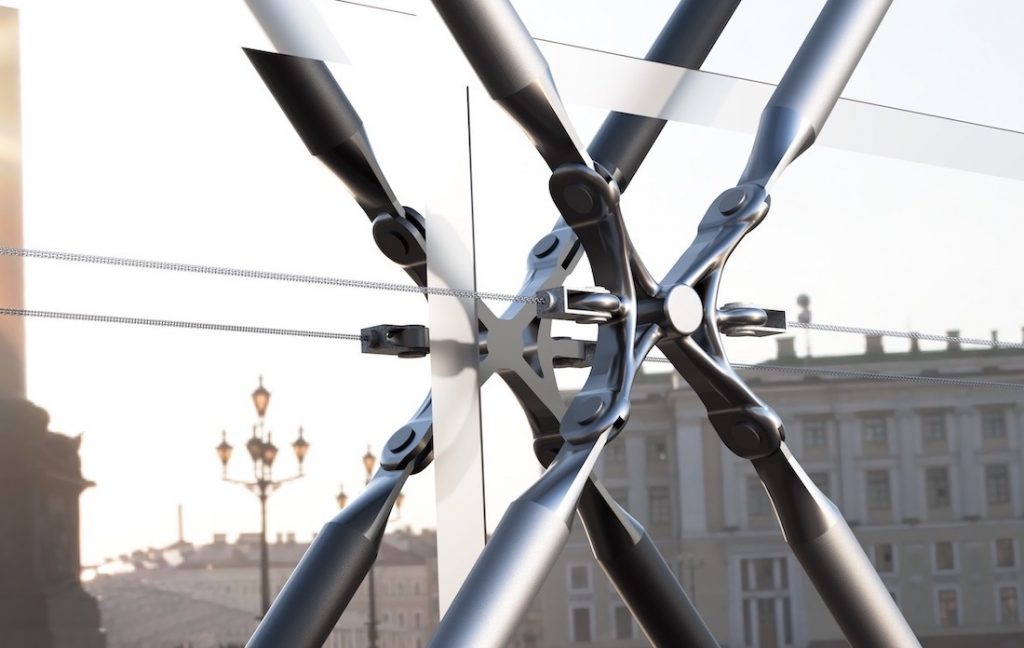Autodesk has long been a big part of the 3D printing industry. Its software has been used in everything from automotive design to prosthetics, and the company has participated directly in several groundbreaking projects, such as the first 3D printed certified ship’s propeller. The WAAMpeller was 3D printed using the additive manufacturing technology known as Wire Arc Additive Manufacturing, or WAAM. Autodesk’s Powermill software was used to work out the computer aided manufacturing (CAM) strategy for the propeller’s curved geometry.
The propeller took seven months from design to installation to testing, but the actual 3D printing only took a few days. Once it was printed, the propellor was CNC milled in Autodesk’s Birmingham, England facility and then installed onto a tugboat.
Autodesk believes that 3D printing will have more and more of a place in the future of construction.
“Architects and builders are looking to manufacturing to make the construction process more efficient and repeatable—more connected,” said Nicolas Mangon, Autodesk’s Vice President of AEC Strategy and Marketing.
Autodesk has now created a large-scale additive manufacturing toolbox, contained in a 21-foot-long, 17,636-lb shipping container. The toolbox has two Panasonic TS-950 robotic arms from Dutch company Valk Welding. The robotic arms are capable of welding, 3D printing, cutting and polishing objects. They have a total of 21 axis points and slide horizontally along a rail attached to the container’s back wall.
According to Elbert Vonk, Sales Engineer at Valk Welding, the additive manufacturing toolbox cost about $483,110 to assemble. The robots, he said, are fed by a super-active wire process that allows for welding without splatter.
“What the team is doing is testing the robots, demonstrating the toolbox’s mobility, and gauging the strength of the materials produced,” said Johnny van der Zwaag, Project Manager Research and Innovation Projects with Autodesk’s Digital Manufacturing Group in Hoofddorp, The Netherlands.
Autodesk asked its customers for feedback on how such a toolbox might be useful in the field, and one customer, Dutch construction engineering company Dura Vermeer, had three suggestions. One of its suggested functions was making tailored components for tolerance-sensitive connections, like “steel spider” connectors that would result in perfectly fitting, easy to install components with optimized weight. Another suggestion was integrated structural components – for example, using generative design to consolidate 10 different components into a single part. Finally, Dura Vermeer proposed using the toolbox to redesign complex structural components into holistic nodes, producing them directly at jobsites rather than having to separate and reassemble them.
Autodesk is working with Dura Vermeer to fulfill these ideas.
“We want to wait for the results of this pilot first, so we do not yet have a next stage in mind,” Dura Vermeer stated. “But we have high expectations, so if things work out the way we hope, there certainly will be a follow-up.”
Van der Zwaag mentioned spare parts as one of the most frequent potential uses for the toolbox. 70% of all spare parts produced never get used, Autodesk pointed out, and a mobile additive manufacturing shop could be used to produce these parts instantly as they are needed.
Autodesk plans to take its mobile toolbox on the road in 2019 to see how it may be used by other companies.
Discuss this and other 3D printing topics at 3DPrintBoard.com or share your thoughts below.
[Source: Building Design + Construction/Images courtesy of Autodesk]
Subscribe to Our Email Newsletter
Stay up-to-date on all the latest news from the 3D printing industry and receive information and offers from third party vendors.
You May Also Like
3D Printing Unpeeled: Wind Turbines, Probiotics and Lenses
TPI Composites, ORNL and Ingersoll Rand are working to make wind turbine tooling segments that can be 18.3 meters long. These elements also include resistive wires that help keep the...
3D Printing Unpeeled: Digital FDM Filament for Functional Gradients
Just published in Nature, a paper by a Seoul National University team looks at “3D printing with a 3D printed digital material filament for programming functional gradients.” Sang-Joon Ahn, Howon...
3D Printing Unpeeled: $5000 Cold Spray 3D Printer, Roland DGA & Living Materials
The AeroForge is a $5000 cold spray metal printer for copper made by a student team at Rice University. In a paper for ACS Central Science a team from Nanjing...
3D Printing Webinar and Event Roundup: April 28, 2024
In this week’s 3D Printing Webinar and Event Roundup, the Ceramics Expo is taking place in Michigan, Stratasys continues its advanced training courses, and SPE is holding a Polymer Characterization...

































